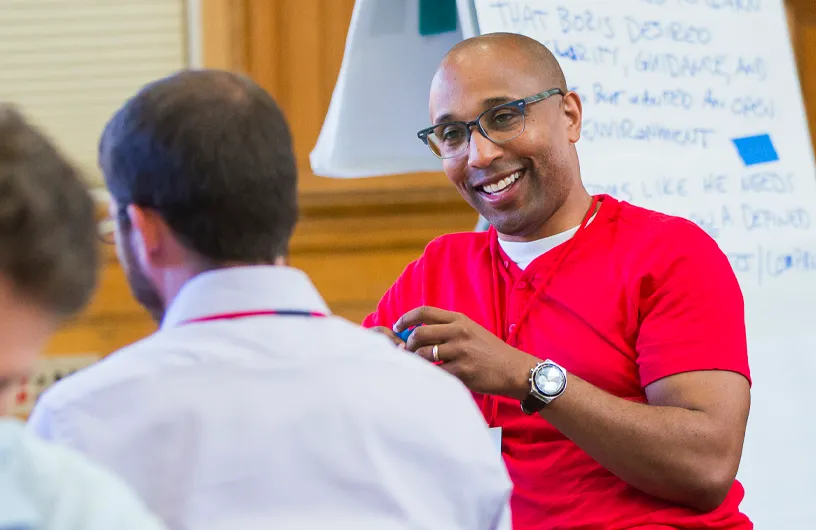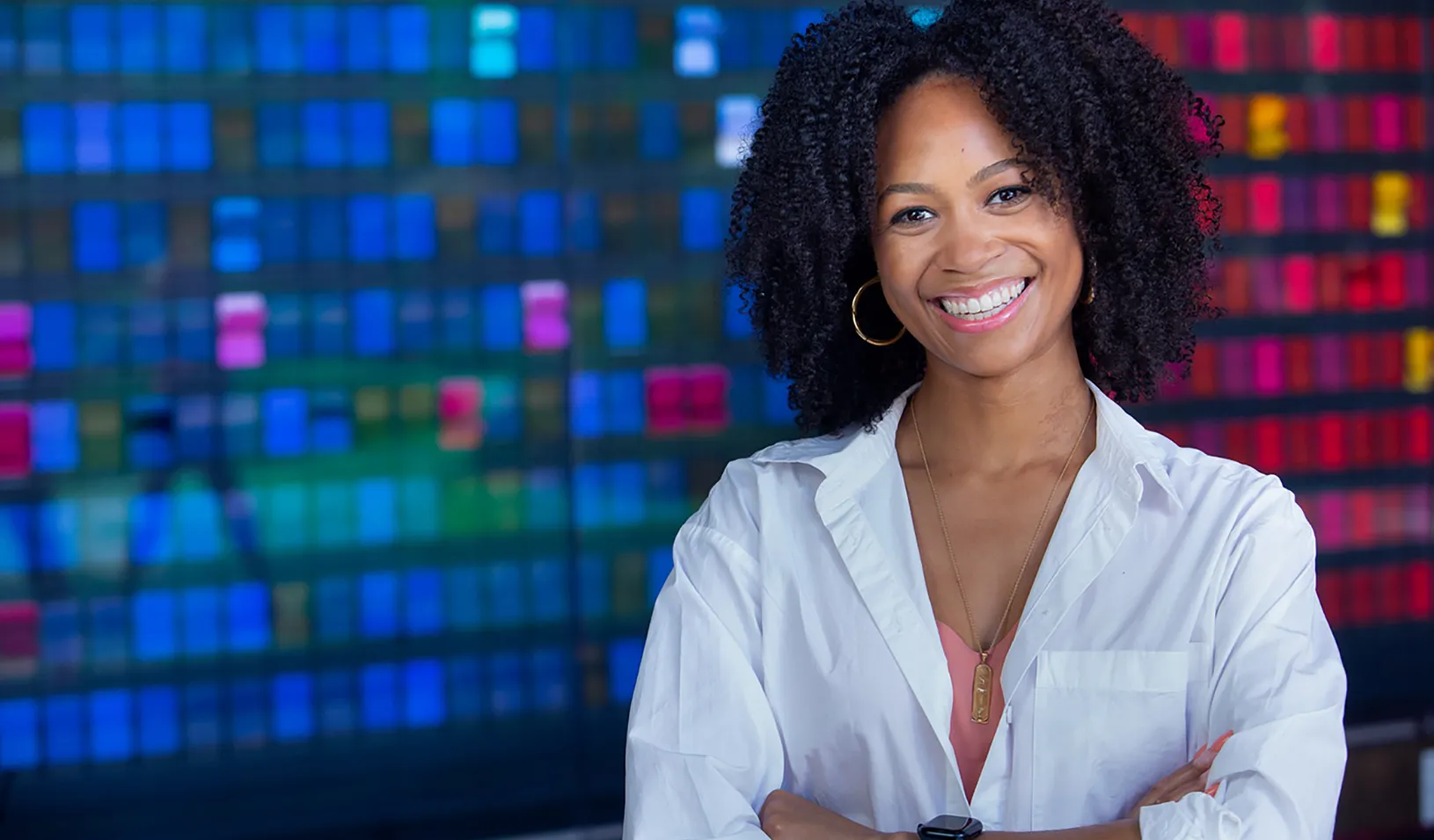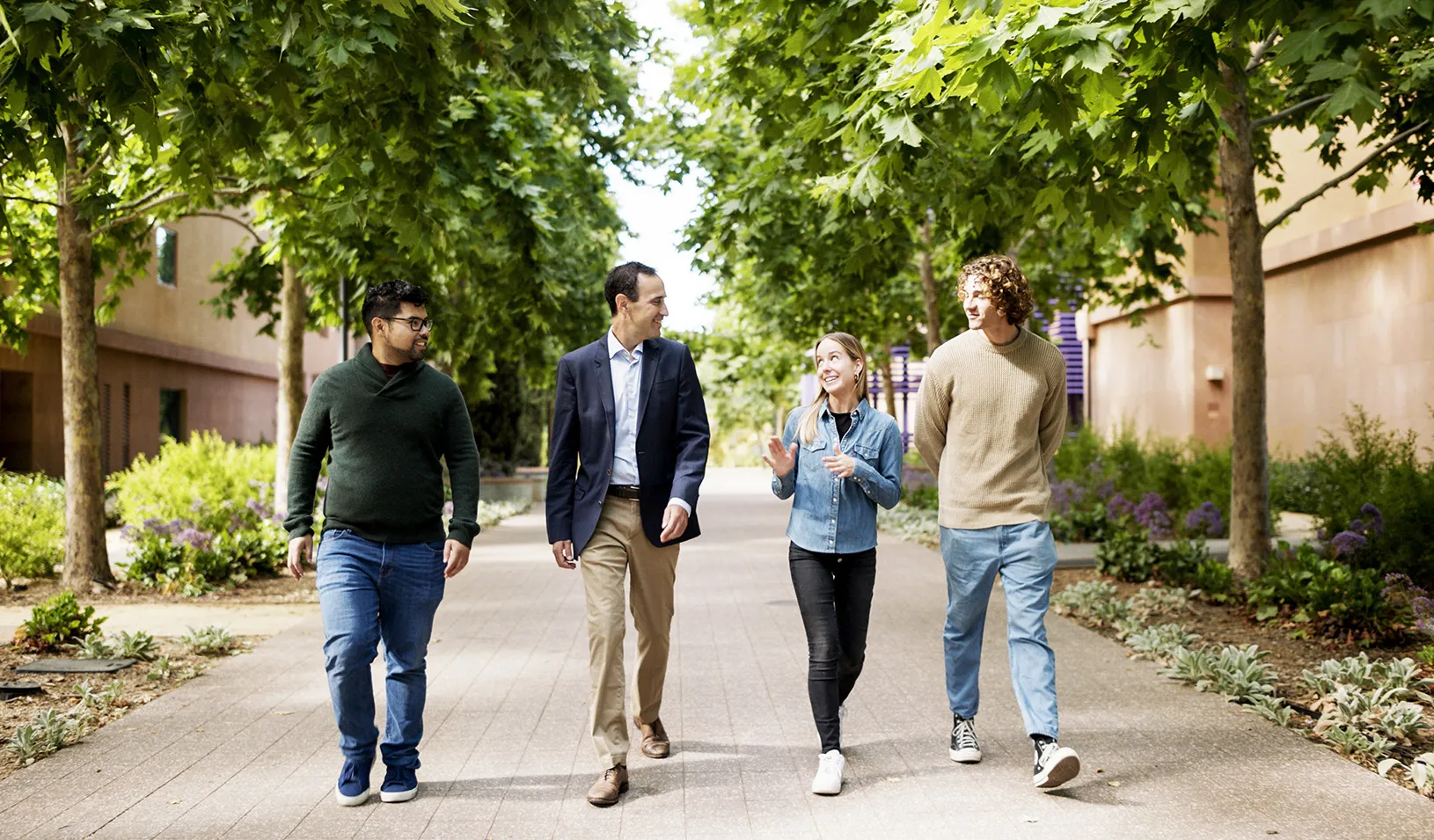Executive Recharge: How This 70-Year-Old Program Provides a Career Jolt
Stanford Executive Program participants say immersive sessions reenergized their work lives.
June 02, 2022

Organizational behavior professor William Barnett is director of the Stanford Executive Program. | Elena Zhukova
In 2019, Annabelle Williams was working as legal counsel for the Australian Olympic Committee, but feeling increasingly frustrated about her future.
“My dream was to do an MBA at Stanford; I knew I didn’t want to be a lawyer forever, and I thought I’d like to move into a more commercial role,” says Williams, whose accomplishments include winning a gold medal as a Paralympics swimmer. “The problem was that I’d never studied accounting and finance, and I knew I needed that background if I wanted to take a job in, say, a sports organization. But it was becoming evident that I was never going to be able to take the amount of time required to do a full MBA.”
Williams reached out to mentor Clem Doherty, MBA ’79, who told her about the Stanford Executive Program.
“I knew SEP’s core business subjects would be good for me, but then I learned about its other focus on topics like happiness, the importance of humor, public speaking and confidence,” she says. “Those things were all so interesting, and something I hadn’t seen in other executive programs.”
Three weeks into the program, Williams, who is missing her left forearm, agreed to give a talk about her career as an athlete and growing up with a disability. Her 60-minute speech brought the audience to their feet.
“That hour changed everything for me,” she says. “I’d done some keynote speaking in the past, and really enjoyed it, but it was just a side hustle. At the end of this talk, two of my classmates who were in marketing came up to me and said, ‘You can do this full-time, and we’ll help you develop a model for how it would look.’ I spent the rest of the program knowing I was going to start my own business and make it about something bigger than me.”

Annabelle Williams | Elena Zhukova
This year marks the 70th anniversary of SEP, which has brought to campus nearly 9,300 C-Suite executives, managing directors, corporate board members, division heads, and people like Williams looking for a new opportunity.
The program was originally conceived to provide business education to executives struggling to navigate the shifting business landscape following WWII, says SEP managing director Ryann Price. It stemmed from the Engineering, Science and Management War Training program, an experiment that proved so successful Stanford GSB petitioned the university to incorporate executive training as an ongoing academic offering.
“The U.S. government was trying to figure out different ways to educate business leaders, some of whom were technical experts who perhaps didn’t have the knowledge required to fulfill needs driven by the war,” Price says. “Many of these people were beyond the point in their careers where they would have done an MBA.”
Price adds that Stanford was “flooded with students using the G.I. Bill” following the war, and couldn’t absorb more, which delayed the plan to bring executives back to campus. SEP finally was launched in 1952.
The last pre-pandemic SEP session, in 2019, included 225 participants from 40 countries, representing more than 30 industries. This year the in-person residential experience is augmented by a new blended format, SEP Flex, that combines four weeks on campus with 10 weeks of remote learning.
A “Co-Teaching” Model
SEP has long focused on bringing together diverse groups of people with a wide range of experience and expertise, says management professor Robert Burgelman, who began teaching in the program in 1989, and served as SEP’s executive director from 1995 to 2015.
“Every person brings something different to the class, because they’re all positioned in different ways in their own organizations, in their background, and in their personal life,” he says. “I’d tell them they were here to co-teach. I wanted to create a process in which they learned from our faculty, and we learned from them. We provide them with tools and ideas, and they take that information and turn it into something they can use.”
That interchange remains a cornerstone of the program, says organizational behavior professor and current SEP faculty director William Barnett.
“We’re bringing the best scholars in the world into the classroom — our top tenured faculty — who engage with the most up-and-coming leaders,” he says. “Faculty find out what’s going on in practice, and those in practice find out what’s going on in research. It’s a co-creation of new and innovative ideas. Our participants might include a scientist from Latin America working on a sustainability problem, who ends up talking with an engineer from Mumbai who came across the same problem because he works with a consulting firm that has a client facing a similar issue in Bangladesh. When these people leave SEP, they innovate in very new ways, often benefitting the company in completely unexpected ways.”
Management lecturer Dan Klein teaches the program’s popular Creativity Workout and maintains contact with many former SEP participants.
“I had someone reach out to me recently who’d been at SEP years ago and was now at a new company where he felt his group and the company’s general culture showed a narrow focus,” Klein says. “He wanted to talk about introducing the creative collaboration and innovative mindset that he experienced at SEP. People who go through this program find it allows them to see what’s needed in their organization, and where this insight can be applied.”
After finishing SEP, Williams resigned from her job, incorporated a company, and today is a global motivational speaker, corporate educator, and board director who works with organizations to improve their diversity and inclusion efforts. She is also a founding partner and head of communications for Reaction, a global community of entrepreneurs, investors, and executives founded by SEP alumni with the goal of improving one billion lives over the next decade.
“Everyone at SEP was so wise,” Williams says. “They helped me gain so much confidence that I left believing I could spend my life working with businesses to create more inclusive environments, close the gender gap and help more people with disabilities gain employment.”

Donald Hicks during SEP | Courtesy of Stanford GSB
SEP alumnus Donald Hicks joined the 2016 class excited to have an opportunity to sharpen the business skills he knew would be important in his new position. He’d recently become a global leader of customer care at Google, having previously served as director of operations at Amazon.
“It was an amazing time,” he says. “I’d already received my MBA and was doing well in my professional career, so I thought this program would offer the same coursework and topics and simply be a refresher from one of the top schools in the world. Oh, my goodness; it was anything but that.”
Hicks found that SEP offered an additional benefit — the opportunity to confront his growing sense of isolation.
“I felt like I’d gotten into my own little echo chamber,” he says. “I was lucky enough to lead global organizations, and I was solving interesting problems, but I was surrounded by a lot of like-minded people while wrestling with those challenges. At SEP, I found myself among international CEOs, COOs, CFOs, and entrepreneurs who’d all had these same experiences, but in different industries in different regions. I began to learn how they approached those same problems in different ways.”
Following his time at SEP, Hicks worked in leadership positions at both Facebook and Twitter. He’s now vice president of trust policy and partnerships at Airbnb, where his responsibilities include leading the company’s community policy, ethics, and crisis management teams.
“Today when I’m explaining something at work, I often lean back not to my MBA, but to the fundamentals I learned in those weeks at SEP,” he says.
“Something else that was very impactful for me was a short course we had on the art of negotiation and the importance of being bold and confident to ask for what you want; I still use the techniques I learned there today.”
Williams’ professional transformation was a direct result of the confidence she gained at SEP, she says.
“When the penny dropped for me, and I realized I could spend my life doing motivational speaking and working with businesses I really care about to improve their culture and create a more inclusive environment, I thought ‘Wow, this is the meaningful work I really, really want to do.’” Williams says. “But it took me a while to get my brain around the idea that I actually could do it, and that was entirely thanks to SEP.”
Hicks also credits the program with helping him develop new levels of confidence as a leader.
“Going to SEP — walking away from my day-to-day work and learning from some of the brightest minds in the world — gave me a feeling that I hadn’t experienced, quite honestly, since I was a child and felt there were no limits to what I could do,” he says. “It was restorative, and a reminder that we can take on some of the biggest challenges professionally and go after them and see what may come of it. It made me feel like I could do anything.”
For media inquiries, visit the Newsroom.
Explore More
Erin Nixon Joins Stanford GSB as Assistant Dean of Admissions

Nia Rose Froome, MBA ’23: Making Local, Fresh Food Available for All

New Research Fund Promotes Responsible Leadership for the Next Century
